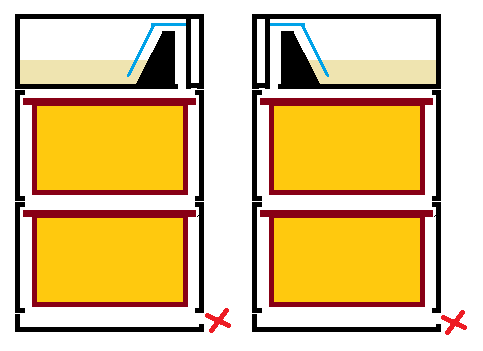ugcheleuce
Field Bee
- Joined
- Apr 15, 2013
- Messages
- 669
- Reaction score
- 1
- Location
- Apeldoorn, Netherlands
- Hive Type
- National
- Number of Hives
- 7-10
G'day everyone
An experienced beekeeper told me that it's better for wintering preparation if the Ashford-type syrup feeder is placed with its entrance over the hive entrance (i.e. towards the front), instead of towards the rear. (The red "x" shows the entrance position.)

I'm curious as to whether you have the same wisdom and/or what your opinions on this are. Do you think it would make any difference? Let's assume for this question that the hive is perfectly level and that the feeder will never be allowed to run dry.
Thanks
Samuel
An experienced beekeeper told me that it's better for wintering preparation if the Ashford-type syrup feeder is placed with its entrance over the hive entrance (i.e. towards the front), instead of towards the rear. (The red "x" shows the entrance position.)

I'm curious as to whether you have the same wisdom and/or what your opinions on this are. Do you think it would make any difference? Let's assume for this question that the hive is perfectly level and that the feeder will never be allowed to run dry.
Thanks
Samuel
Last edited:




